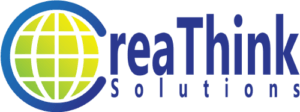In today’s fast-paced, digitally connected world, remote staffing solutions have revolutionized the way businesses operate. By leveraging technology and global talent, companies can access skilled professionals from across the globe — especially top-tier remote talent in the Philippines while reducing costs and increasing flexibility. But how exactly do remote staffing solutions work, and how can they benefit your business? This guide will walk you through the process, components, and advantages of remote staffing, helping you understand why it’s a game-changer for modern organizations.
What is Remote Staffing in the Philippines?
Remote staffing is a modern approach to workforce management that enables businesses to hire skilled professionals from across the globe without needing physical office space. By leveraging technology, organizations can tap into a vast talent pool, ensuring they find the right fit for their needs. This model has gained immense popularity due to its cost-effectiveness, flexibility, and ability to access diverse skills.
Unlike traditional hiring, remote staffing eliminates geographical limitations. It allows businesses to build a team of remote employees who can work from anywhere while staying connected through digital tools and platforms. For companies aiming to stay competitive in a rapidly changing business landscape, remote staffing solutions are an essential strategy.
Components of Remote Staffing
1. Talent Acquisition
The first step in remote staffing is identifying and attracting the right talent. Businesses looking to streamline operations often turn to remote staffing in the Philippines for its affordability, skill diversity, and time zone compatibility. These agencies specialize in sourcing candidates who possess the required skills and experience. By using job boards, professional networks, and referrals, they ensure that businesses have access to a curated pool of top talent.
2. Onboarding and Integration
Once a candidate is hired, the onboarding process begins. Effective onboarding is critical to integrating remote employees into the company culture. This involves providing clear guidelines, training materials, and access to essential tools. A well-structured onboarding process helps newly hired remote employees feel welcomed and ensures they are equipped to contribute to the organization’s success from day one.
3. Communication Tools
Seamless communication is the backbone of any remote team. Tools like Slack, Microsoft Teams, and Zoom enable real-time collaboration and keep everyone on the same page. These platforms foster transparency, streamline workflows, and ensure that remote employees remain connected with their teams.
4. Performance Monitoring
Tracking performance is vital to ensure that remote employees meet expectations. Businesses use project management software like Asana or Trello to assign tasks, set deadlines, and monitor progress. Regular feedback sessions also play a crucial role in maintaining productivity and addressing challenges promptly.
5. Payroll and Compliance
Managing payroll for remote employees can be complex, especially for international companies hiring remote workers in the Philippines, where labor regulations and tax compliance can vary. A reliable remote work staffing agency often handles payroll and ensures compliance with local labor laws. This reduces the administrative burden on businesses and ensures that employees are compensated accurately and on time.
How Remote Staffing Solutions Work

Identifying Needs
The first step in implementing remote staffing solutions is assessing which roles can be effectively managed remotely. Not all positions are suitable for remote work, so businesses need to evaluate their requirements carefully. This involves identifying tasks that can be performed independently and do not require constant supervision. By understanding their needs, companies can determine the best way to integrate remote employees into their workforce.
Sourcing and Screening Candidates
Once the needs are identified, the next step is sourcing and screening candidates. A remote staffing agency plays a pivotal role in this process. They utilize job boards, professional networks, and outsourcing providers to find qualified candidates. To ensure the best fit, agencies conduct thorough interviews, skill assessments, and reference checks. This rigorous screening process guarantees that only top talent is presented to the business.
Onboarding and Collaboration Setup
After selecting the right candidates, the onboarding process begins. Businesses must set up digital collaboration platforms and provide training sessions to help remote employees get started. This includes familiarizing them with company policies, workflows, and communication tools. Proper onboarding ensures that remote employees feel supported and are ready to contribute effectively.
Ongoing Support and Management
Managing a remote team requires ongoing support to maintain productivity and morale. Regular check-ins, performance reviews, and open communication channels are essential for addressing any issues that arise. By fostering a supportive environment, businesses can ensure that their remote employees remain engaged and motivated.
Scalability and Adjustments
One of the key advantages of remote staffing is scalability. Businesses can expand or reduce their remote team based on project demands. This flexibility allows organizations to adapt to changing market conditions without the long-term commitment associated with traditional hiring. A remote staffing agency can assist in scaling the team efficiently, ensuring that businesses have the resources they need at any given time.
Why Choose CreaThink for Remote Staffing in the Philippines?
CreaThink Solutions is a trusted partner for businesses seeking reliable remote staffing solutions. With a seamless approach tailored to your needs, CreaThink Solutions ensures that you have access to top talent without the challenges of traditional hiring. Here’s how our services can help:
1. Expertise in Talent Acquisition
CreaThink Solutions’ team of recruitment specialists excels in identifying skilled professionals across various industries. Whether you need to hire a remote team for IT, marketing, customer support, or any other function, CreaThink Solutions connects you with candidates who match your requirements.
2. Comprehensive Onboarding Support
From training materials to digital tools, CreaThink Solutions provides everything needed to integrate new hires into your organization. Their onboarding process ensures that remote employees are aligned with your company’s goals and ready to deliver results.
3. Advanced Communication Solutions
CreaThink Solutions leverages cutting-edge communication tools to enhance collaboration among remote teams. By promoting transparency and accountability, they help businesses achieve seamless operations.
4. Performance Monitoring and Management
With these services, businesses can track the performance of their remote employees effortlessly. Their robust monitoring systems and regular feedback sessions ensure that your team remains productive and aligned with organizational objectives.
5. Compliance and Payroll Management
Navigating payroll and compliance challenges is no longer a concern with CreaThink Solutions. They handle all administrative tasks, ensuring that remote employees are compensated accurately and that businesses adhere to local regulations.
6. Flexible and Scalable Solutions
Whether you need to expand your team for a short-term project or reduce it during slow periods, our scalable solutions make it easy to adjust your workforce. This flexibility enables businesses to stay agile in a dynamic market.
Ready to Hire Skilled Remote Talent from the Philippines?
In today’s fast-paced, digitally connected world, remote staffing solutions have revolutionized the way businesses operate. By leveraging technology and global talent, companies can access skilled professionals from across the globe while reducing costs and increasing flexibility. But how exactly do remote staffing solutions work, and how can they benefit your business? Explore this comprehensive guide to understand the process, components, and advantages of remote staffing.
Partner with CreaThink Solutions to build a high-performing remote team tailored to your business goals. Ready to scale? Follow us on LinkedIn and Facebook for expert tips, updates, and insights on building your ideal remote workforce.









